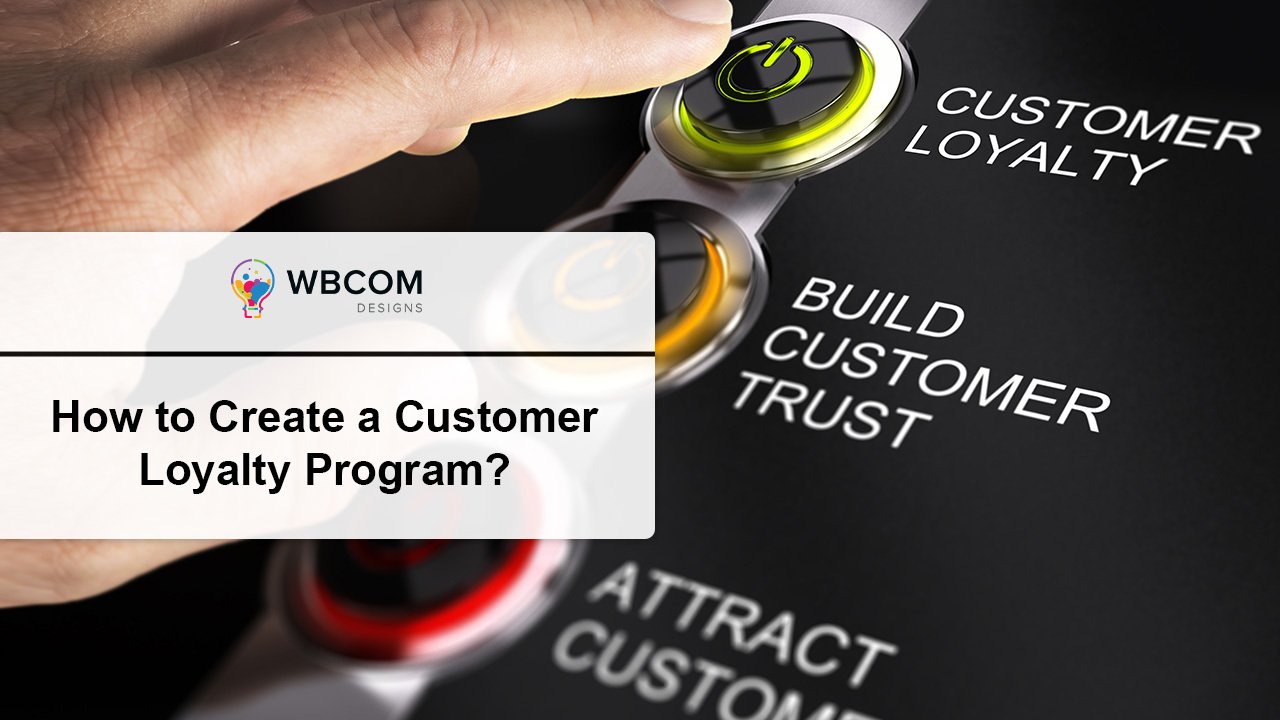As a business owner, you know that acquiring new customers can be an expensive and time-consuming process. So, what if I told you there was a way to keep your existing customers coming back for more, without breaking the bank? Enter customer loyalty programs. These programs not only increase customer retention but also boost your bottom line. In fact, according to a study by Harvard Business School, increasing customer retention rates by just 5% can increase profits by up to 95%. So, if you’re ready to learn how to create a customer loyalty program that keeps your customers loyal for life, keep reading. We have all the tips, tricks, and strategies you need to start.
Determine Your Objectives
When creating a customer loyalty program, it’s crucial to understand your business goals and objectives clearly. Knowing what you hope to achieve through a loyalty program will help you determine your program’s best structure, rewards, and marketing strategies. Here are some tips to help you determine your objectives:
- Increase Customer Retention: One of the primary objectives of a loyalty program is to increase customer retention. Determine the percentage of customers you want to retain, and set a goal for your program to achieve this.
- Increase Customer Spending: Another objective may be to increase customer spending. Determine how much you want to increase the average transaction value or purchase frequency.
- Encourage Referrals: You may also want to use your loyalty program to encourage customers to refer friends and family to your business. Determine the percentage of referrals you want to generate and set a goal for your program to achieve this.
- Gather Customer Data: Collecting customer data is another objective you may have for your loyalty program. Determine what data you want to collect, such as demographics or purchase history.
- Improve Customer Engagement: You may also want to use your loyalty program to improve customer engagement. Determine the type of engagement you want, such as social media interactions or email open rates.
Once you have identified your objectives, you can use them to guide the design and implementation of your loyalty program. By setting clear goals, you can measure the success of your program and make adjustments as needed to ensure that it continues to meet the needs of your customers and your business.
Determine Your Objectives
Defining your target audience is crucial in creating an effective customer loyalty program. Your loyalty program should be designed to meet the needs and preferences of your target audience. Here are some tips to help you define your target audience:
- Identify Demographics: Start by identifying the demographics of your target audience, such as age, gender, income, and location.
- Analyze Purchase Behavior: Analyze the purchase behavior of your customers to understand their buying habits, such as what products they buy, how often they purchase, and how much they spend.
- Create Customer Personas: Once you have identified your target audience’s demographics and purchase behavior, create customer personas to understand their preferences and needs. Customer personas are fictional representations of your ideal customer, and they help you understand what motivates your customers to make purchases.
- Segment Your Audience: Segment your target audience into different groups based on their purchase behavior and preferences. This allows you to create targeted loyalty programs that meet the unique needs of each group.
- Conduct Surveys and Interviews: Finally, conduct surveys and interviews with your customers to gather feedback on your loyalty program and understand their preferences and needs. This feedback can help you adjust your loyalty program to meet your target audience’s needs better.
By defining your target audience, creating customer personas, and segmenting your audience, you can create a loyalty program tailored to your customers’ unique needs and preferences. This, in turn, will help you increase customer engagement, improve retention, and drive more revenue for your business.
Decide on Your Rewards
Choosing the right rewards is critical to the success of your customer loyalty program. The rewards you offer should be appealing to your customers and motivate them to continue doing business with you. Here are some tips to help you decide on your rewards:
- Determine the Type of Rewards: Choose the type of rewards that make the most sense for your business and your customers. This could include discounts, free products or services, exclusive access to events or content, early access to new products, or VIP treatment.
- Consider the Value of Rewards: Determine the value of your rewards and how much they will cost your business. You want to make sure that the rewards you offer are valuable enough to your customers to keep them engaged, but not so expensive that they eat into your profits.
- Set Eligibility Criteria: Determine the eligibility criteria for earning rewards. This could include spending a certain amount of money, making a certain number of purchases, referring new customers, or completing certain actions, such as leaving a review or following your business on social media.
- Personalize Rewards: Consider personalizing rewards for individual customers based on their purchase history, preferences, or other data you have collected. This can help to make your loyalty program more engaging and rewarding for your customers.
- Test and Refine: Once you have chosen your rewards, test them with a small group of customers and gather feedback. Use this feedback to refine your rewards and ensure that they effectively drive customer engagement and retention.
By choosing the right rewards and setting clear eligibility criteria, you can create an engaging and cost-effective loyalty program for your business. Personalizing rewards and testing and refining your program over time can help you ensure that it continues to meet the evolving needs of your customers.
Design Your Program
Designing your loyalty program is important in creating a successful customer loyalty program. Your program should be structured to align with your business model and objectives, and be easy for your customers to understand and engage with. Here are some tips to help you design your loyalty program:
- Choose a Program Structure: Choose a program structure that fits your business model and objectives. This could include a points-based system, a tiered system, or a subscription-based system. Consider what will be most appealing and engaging to your customers.
- Define Program Terms and Conditions: Define program terms and conditions, such as point values, expiration dates, and redemption options. Ensure these are clearly communicated to your customers to avoid confusion or frustration.
- Set Clear Goals: Set clear goals for your loyalty program, such as increasing customer retention, boosting sales, or driving customer advocacy. This will help you measure the success of your program and make adjustments as needed.
- Make it Easy to Join: Make it easy for customers to join your loyalty program by offering a simple and easy signup process. This could include offering incentives for signing up, such as bonus points or discounts.
- Communicate Regularly: Communicate regularly with your customers about your loyalty program, including program updates, new rewards, and special promotions. This will help keep your program top of mind and encourage ongoing engagement.
By designing a loyalty program that aligns with your business model and objectives, and by setting clear goals and program terms, you can create a program that is engaging and effective in driving customer engagement and retention. Making joining and communicating regularly with your customers easy can also help ensure ongoing success.
Promote Your Program
Promoting your loyalty program is essential to ensuring its success. By creating a comprehensive marketing plan and utilizing various channels, you can increase awareness and engagement among your customers. Here are some tips to help you promote your loyalty program:
- Create a Marketing Plan: Develop a marketing plan that outlines your promotional tactics and timelines. This could include social media campaigns, email marketing, in-store signage, and other advertising channels.
- Utilize Various Channels: Utilize various channels to promote your loyalty program, including social media, email marketing, and in-store signage. Consider what channels are most effective in reaching your target audience.
- Highlight Benefits: Highlight the benefits of your loyalty program, such as exclusive discounts, early access to new products, and personalized rewards. Make sure customers understand how your loyalty program can benefit them.
- Leverage Customer Data: Leverage customer data to target promotions and offers to specific customers. This could include offering bonus points or discounts to customers who have not purchased in a while or have referred new customers.
- Incentivize Referrals: Incentivize referrals by offering bonus points or rewards for customers who refer new customers to your business.
- Measure Results: Measure the results of your marketing efforts to determine what is working and what needs improvement. This will help you refine your marketing plan and optimize your promotions for maximum impact.
By creating a marketing plan and utilizing various channels, highlighting the benefits of your program, leveraging customer data, incentivizing referrals, and measuring your results, you can promote your loyalty program effectively and drive ongoing engagement among your customers.
Launch and Monitor Your Program
Launching your loyalty program is just the beginning. Once your program is up and running, monitoring its performance and making necessary improvements is important to ensure ongoing success. Here are some tips to help you launch and monitor your loyalty program:
- Launch Your Program: Launch your loyalty program with a clear message and call to action. Make sure your customers understand the benefits and how to participate.
- Track Performance: Track the performance of your loyalty program using key performance indicators (KPIs) such as customer acquisition, retention, and average order value. This will help you understand how your program is performing and identify areas for improvement.
- Collect Feedback: Collect feedback from your customers through surveys or other feedback mechanisms to gain insights into what they like and don’t like about your program. Use this feedback to make necessary improvements and adjustments.
- Adjust Program Terms: To improve engagement and retention, adjust program terms and conditions. This could include changing point values or rewards or adjusting the expiration dates of points.
- Communicate Changes: Communicate changes to your program to your customers clearly and transparently. Ensure they understand the benefits of the changes and how to take advantage of them.
- Monitor Competition: Monitor your competition’s loyalty programs to stay informed about industry trends and ensure your program remains competitive.
By launching your program with a clear message, tracking its performance, collecting customer feedback, adjusting program terms, communicating changes, and monitoring competition, you can launch and monitor your loyalty program effectively and make necessary improvements to ensure ongoing success.
Best Practices for a Successful Loyalty Program
Implementing best practices is essential for a successful loyalty program. By providing excellent customer service, keeping the program simple and easy to understand, and continuously evaluating and adjusting your program, you can create a positive customer experience and drive ongoing engagement. Here are some best practices to consider for your loyalty program:
- Provide Excellent Customer Service: Providing excellent customer service is critical to the success of your loyalty program. Ensure your customer service team is trained to answer questions about the program and help customers with any issues.
- Keep the Program Simple and Easy to Understand: Keep your loyalty program simple and easy to understand. Avoid complex rules and terms that could confuse customers. Make sure customers understand how to earn and redeem rewards.
- Offer Personalized Rewards: Offer personalized rewards tailored to your customers’ interests and preferences. This could include offering discounts or free products based on past purchases or other customer data.
- Encourage Social Sharing: Encourage customers to share their loyalty program experience on social media. This can help increase awareness and engagement among your target audience.
- Offer Exclusive Benefits: Offer exclusive benefits to loyalty program members, such as early access to new products or free shipping on orders. This can help increase retention and drive repeat purchases.
- Continuously Evaluate and Adjust Your Program: Continuously evaluate and adjust your program to meet your customers’ needs. Use customer feedback and performance metrics to identify areas for improvement and make necessary adjustments.
By providing excellent customer service, keeping the program simple and easy to understand, offering personalized rewards, encouraging social sharing, offering exclusive benefits, and continuously evaluating and adjusting your program, you can create a successful loyalty program that drives ongoing engagement and customer loyalty.
Wrapping Up Words | Create a Customer Loyalty Program
In conclusion, creating a customer loyalty program is a great way to retain customers and increase revenue. Following the steps outlined in this article, you can create a program tailored to your business that meets your customers’ needs. Remember to keep it simple, offer valuable and relevant rewards, and communicate the program effectively to your customers. With a well-designed loyalty program, you can build strong relationships with your customers and keep them returning for more.








